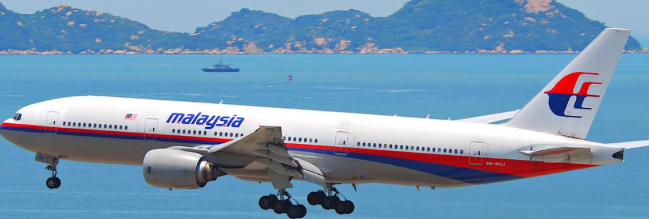On March 8, 2014, Malaysia Airlines Flight MH370 took off from Kuala Lumpur International Airport, bound for Beijing. The Boeing 777-200ER was carrying 239 passengers and crew members. However, less than an hour into its journey, the aircraft vanished from radar, leaving behind one of the most perplexing mysteries in aviation history. Despite exhaustive search efforts, the full wreckage has never been found, and countless theories have emerged over the years regarding what truly happened that night.
Some theories suggest that the aircraft suffered a mechanical failure or ran out of fuel, while others propose more sinister explanations, including hijacking, military intervention, or even a complex geopolitical cover-up. The mystery of MH370 remains unsolved, continuing to capture the world’s imagination.

The Night of the Disappearance
Timeline of Events
- 12:41 AM – Flight MH370 departs from Kuala Lumpur International Airport.
- 1:07 AM – The aircraft sends its last automated ACARS transmission.
- 1:19 AM – The co-pilot, Fariq Abdul Hamid, makes the last known verbal communication: “Good night, Malaysian three-seven-zero.”
- 1:21 AM – The plane’s transponder stops transmitting, making it invisible to civilian radar.
- 1:30 AM – 2:00 AM – Military radar detects an unidentified aircraft making an unexpected westward turn.
- 8:19 AM – A final satellite handshake from the aircraft suggests it was still in flight, deep in the southern Indian Ocean.
At this point, the plane seemed to vanish completely, leaving behind only speculation and unanswered questions.
Theories and Speculation
One of the most commonly debated explanations is that the aircraft was deliberately taken off course. Whether by a hijacker, the pilot himself, or an unknown third party, some theorists believe the disappearance was an intentional act. But why? Could it have been a planned suicide, a geopolitical maneuver, or even a military cover-up?
One of the most controversial theories suggests that the plane was intercepted by military forces—possibly the United States, China, or another global power—due to the presence of sensitive cargo or passengers with high-value intelligence. Some theorists point to the U.S. military base on Diego Garcia as a possible destination where the plane might have been redirected, though no concrete evidence supports this claim.
Others speculate that cyber-hijacking might have played a role. As modern aircraft become more technologically advanced, could someone have remotely taken control of MH370? If so, who would have had the expertise to do so, and for what purpose?
There is also the possibility of mechanical failure or fire. While some experts believe the plane’s erratic flight path suggests human intervention, others argue that an emergency onboard—such as a sudden decompression—could have incapacitated the crew, leaving the aircraft to fly on autopilot until it ran out of fuel.
Despite these theories, no single explanation fully accounts for all the known evidence, leaving the world grasping for answers in the vast mystery of MH370.
Key Questions and Unanswered Mysteries
Why was the plane’s transponder turned off?
One of the most baffling aspects of the disappearance is the loss of communication. The transponder did not fail due to a technical issue; it was manually switched off. This suggests intentional interference, but by whom? And why?
Could the passengers have survived?
The official consensus is that the plane crashed into the Indian Ocean, but with no bodies recovered, some still wonder if an alternative fate awaited those onboard.
Why has no wreckage been definitively located?
While some debris, including a flaperon, has washed up on islands such as Réunion, the main wreckage has never been found. Could it have landed somewhere else? Or is the ocean simply too vast to explore fully?
Was it pilot suicide?
Captain Zaharie Ahmad Shah has been scrutinized, with theories suggesting he deliberately crashed the plane. His personal flight simulator had routes similar to MH370’s final path, fueling speculation. But if this was the case, why take such a long, indirect route?
Investigation Efforts and Ongoing Searches
The disappearance of MH370 triggered one of the largest search operations in aviation history, spanning multiple nations and billions of dollars. Initially, efforts were concentrated in the South China Sea, but as more satellite data became available, the search shifted to the Indian Ocean. This vast, remote region made recovery efforts exceedingly difficult.
Debris confirmed to be from MH370 has been found in Madagascar, Mozambique, and Réunion Island.

But these discoveries have only deepened the mystery. They indicate that the aircraft likely crashed into the ocean, yet the lack of a final impact site continues to raise doubts and fuel alternative theories.
Today, independent researchers and private organizations continue to seek answers, with new expeditions periodically launched in hopes of locating the wreckage. As technology advances, there remains hope that one day the truth will be uncovered.
Conclusion
Nearly a decade later, MH370 remains one of the greatest unsolved mysteries of modern times. The lack of closure has left families grieving and aviation experts puzzled. The search for answers continues, and with every new lead, the world holds its breath, hoping that one day, the fate of Flight MH370 will finally be revealed.
Until then, the unanswered questions linger: What truly happened on that fateful night? Who, if anyone, was responsible? And will we ever find the wreckage that could provide definitive answers?

